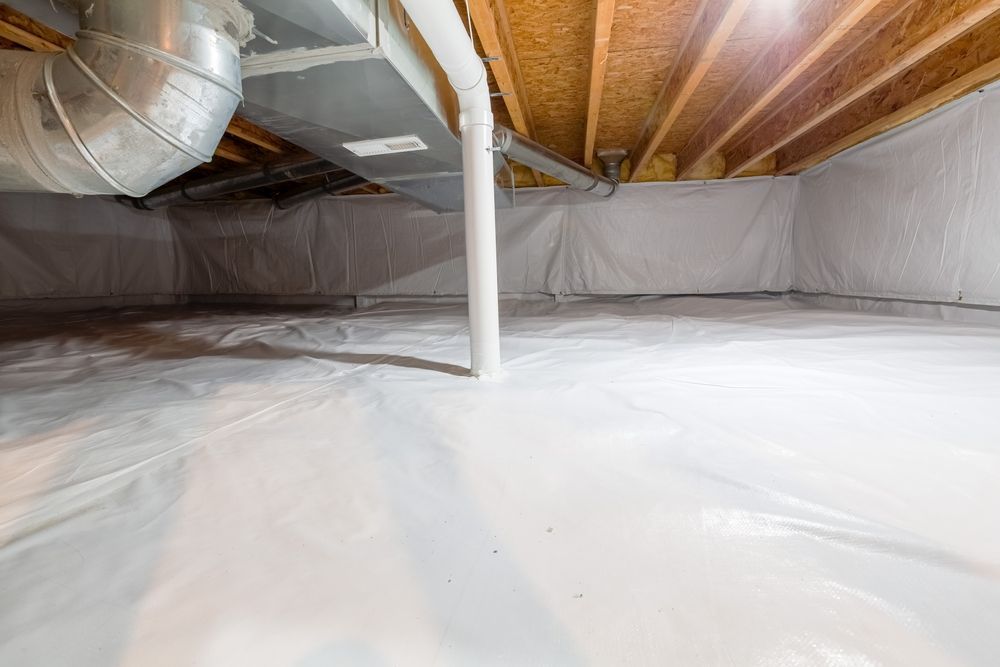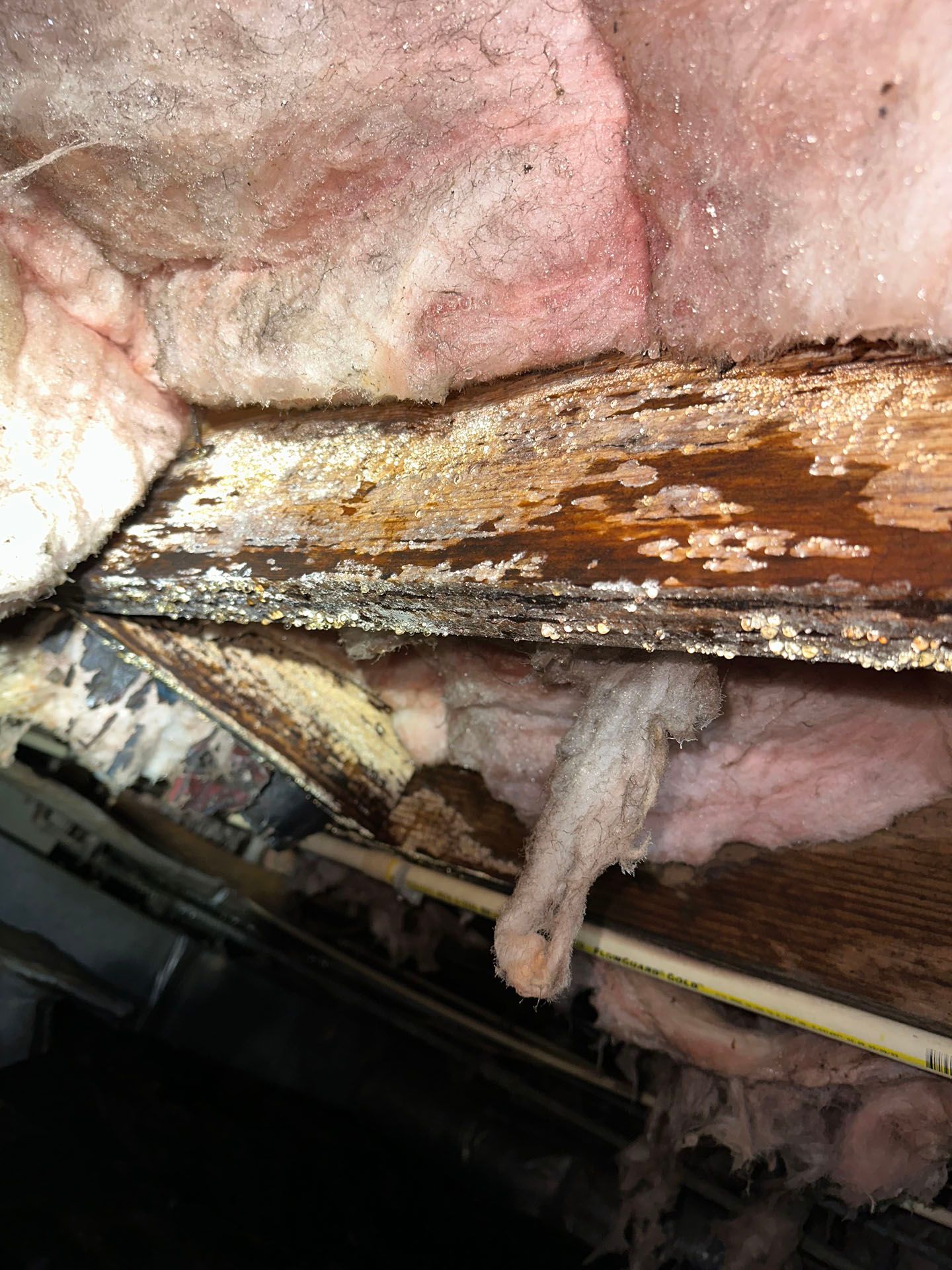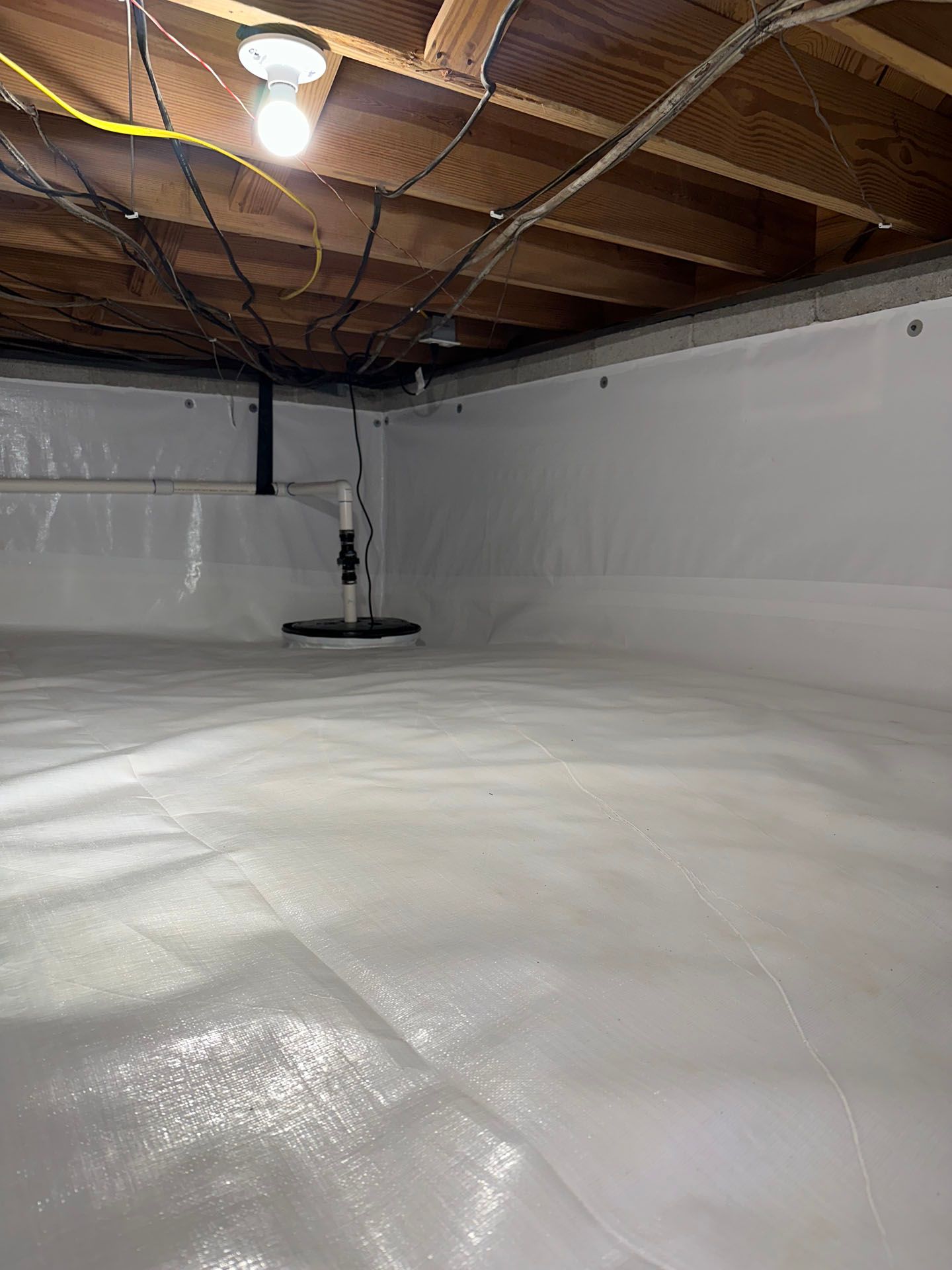Huntsville, Alabama

Claim Your FREE Crawl Space Inspection Today!
Sawyer Williams: 256-727-4422
Schedule Your Free estimate!
No-Obligation, Free Inspections
No-Obligation Free Estimates
We Warranty All of Our Work
100% Satisfaction Guaranteed
Do you need to cope with a flooded crawl space? Calm down! Although it may seem impossible, there are things you can do to deal with crawl space flooding fast and effectively, saving you time and money. So that you can get back to living your life without worry, we've compiled some expert advice on how to deal with this vexing issue here on the site. If you want to find out more, read on!
Causes of Crawl Space Flooding
Heavy rain or flooding, malfunctioning or clogged drainage systems, damaged pipes or plumbing issues, and poor grading around the foundation of the home are just some of the main reasons of flooded crawl spaces.
In order to properly handle and avoid future episodes of flooding, it is crucial to determine the root source of the problem. Sometimes expert help is needed to zero in on the problem and develop a workable solution. Take all the essential steps to safeguard your property until help arrives.
Signs of Crawl Space Flooding
If you think water may get into your crawl space, there are a few telltale indications to look out for. Some examples are:
Standing water is the most noticeable symptom of a flooded crawl space. Pools of water in your crawl space are a telltale sign that you have a flooding problem.
Smells of mold must indicate water damage and the possibility of mold growth in your crawl area.
The floorboards may be warped because of water damage in the crawl area if they feel spongy or appear to be warping.
Water damage often manifests as paint that has peeled or become discolored. These problems could be caused by water entering your property through the crawl space.
Rising humidity levels may indicate the presence of water in the basement or crawl area.
If you see any warning signals, don't wait to take action; doing so could save your home from additional destruction.
Prevention of Crawl Space Flooding
The best way to avoid water damage and mold in your home is to keep the crawl area dry. Listed below are several methods that can be used to keep water out of a crawl space:
Make sure your gutters, downspouts, and other drainage systems are in good operating order by inspecting and maintaining them regularly. Remove any buildup of material frequently, and if necessary, add more drains.
If you find a leak in the pipe or hear a strange noise coming from the toilet, fix it right away. If you let a little leak go undetected, it could cause a large flood.
Make sure the land slopes away from your house to reduce the risk of water collecting and causing damage to the foundation by checking the grading.
Put in a sump pump to help drain any standing water in your crawl space and avoid floods.
In order to keep water out of your crawl space, you may want to apply a waterproof coating to the walls and floor.
Taking these precautions can lessen the likelihood of crawl space flooding, which can cause extensive and expensive repairs to your home.
Solutions to Crawl Space Flooding
If you have a flooded crawl space, you need to take immediate action to fix the problem and protect your property from further water damage. The following are some potential answers to your problems:
The first step in fixing crawl space flooding is to get rid of any standing water. A sump pump or wet/dry vacuum will do the trick here.
Once the pooled water has been drained, the underlying cause of the flooding should be located and fixed. This could mean fixing a leaky pipe or clearing out a clogged drain, among other things.
After the water has been removed and the cause of the flooding has been fixed, it is time to dry up the crawl space. Fans, dehumidifiers, and other drying tools can be used for this purpose.
Clean and disinfect the area. Floodwater often contains toxins, so it's necessary to clean and disinfect the crawl space to avoid the spread of mold and other bacteria.
Once the crawl area is dry and clean, you should evaluate any damage caused by the water and begin fixing it. Repairs could include repairing frames, insulation, or other components that have been compromised.
You can stop the spread of water in your crawl space and save your home from further damage if you follow these procedures.
Cost of Crawl Space Flooding
Depending on the level of damage and the measures required to fix it, the price tag for a flooded crawl space might range widely. This price may be affected by the following:
Water removal costs will increase proportionally to the volume of water that must be extracted from the affected area.
The extent of the damage; if the crawl space has been severely damaged by the floods, the repair costs will be higher.
The cost of labor can differ from one location to another and from one repair job to another.
The price of materials: This variable will be determined by the nature and quantity of materials required for the repairs.
Without knowing the specifics of the flood and the repairs that need to be made, it's hard to give an estimate of how much a flooded crawl space will cost.
If you want a more precise sum, it's advisable to go to an expert. In any case, dealing with a flooded crawl area as soon as possible is crucial for minimizing damage and subsequent repair costs.
Health Risks of Crawl Space Flooding
A flooded crawl area can provide a number of health problems for the residents of a home. Crawl space flooding can pose serious health dangers, including those listed below.
The presence of mold is another potential health risk associated with flooding, as it thrives in damp, dark environments and can create allergens and irritants that can aggravate existing respiratory, allergies, and other health conditions.
Floodwater may be contaminated with harmful substances like germs, viruses, and chemicals that could be harmful if consumed or inhaled.
Walls and flooring may collapse or other hazards may arise as a result of flood damage to the crawl space and the house.
There is a risk of electrocution if water collects in the crawl area and then flows into or onto electrical components.
The health dangers to you and your family from a flooded crawl area should be mitigated as quickly as possible. A professional should be consulted if you feel that water has entered your crawl space in order to identify the best course of action.
Professional Services for Crawl Space Flooding
Seek professional assistance to evaluate the damage and implement a solution if your crawl space has flooded. If you're dealing with flooding in your crawl space, hiring a professional may be your best bet for a few reasons.
Skill: Trained specialists can evaluate the situation and provide a plan of action at lightning speed. They'll be able to figure out what's triggering the floods and do something about it.
Professionals have access to specialist equipment like wet/dry vacuums, dehumidifiers, and drying fans that can be used to extract moisture from the crawl space and speed up the drying process.
If water gets into the electrical wiring in a crawl area, it could cause an electrical shock. Experts know how to avoid harm while navigating these challenges and will take all efforts to shield themselves and their property from harm.
Saving time: Managing the aftermath of a flooded crawl space is a difficult and time-consuming task. When you hire a professional, you can rest easy and focus on other things in your life while they take care of the cleanup and repairs.
When it comes to fixing the problem of water in your crawl space and preventing future damage to your property, professional assistance can be of great assistance.
DIY Solutions for Crawl Space Flooding
There's a good chance you'll want to take care of the crawl space flooding all on your own. In the event that crawl space flooding becomes too much for a homeowner to handle alone, they should call in an expert. Managing water in a crawl space can be a challenging DIY endeavor, but here are some pointers to help you out.
First and foremost, put safety first. Know the risks involved with a flooded crawl space. Avoid electrocution by wearing protective gear like rubber boots and gloves.
Get rid of puddles by sucking up the water with a wet/dry vacuum or pumping it out with a sump pump.
Use fans, dehumidifiers, and other drying equipment to remove moisture from the crawl space.
Fix whatever is causing the flooding, whether it's a burst pipe, a clogged drain, or anything else.
After the crawl space has dried out, it is important to sterilize and disinfect the area to avoid the formation of mold and other bacteria.
Be honest with yourself about what you can and can't do as a homeowner, and don't be afraid to call in the pros if things get too much. When dealing with crawl space flooding, do not attempt to do it yourself; professional help is highly recommended due to the difficulty and length of the process.
Insurance Coverage for Crawl Space Flooding
Whether or not flood damage in a crawl area is covered by your homeowner's insurance depends on the policy's language. A burst pipe or malfunctioning water heater are examples of abrupt, accidental events that are typically covered by homeowners' insurance.
However, most basic homeowner's insurance policies do not pay for flood damage.
Getting flood insurance is an excellent option if you're worried about your crawl space being flooded. When rivers, streams, or other bodies of water overflow their banks and produce flooding, a distinct type of insurance called "flood insurance" kicks in to cover the resulting destruction. It's wise to get flood insurance before the possibility of flooding actually materializes because of the standard 30-day waiting period before coverage begins.
If you have a flooded crawl space and are wondering if your homeowner's insurance will cover the damage, it's a good idea to call your insurer. Having a conversation with them can help you better understand your policy's coverage and any limitations there may be.
Long-Term Effects of Crawl Space Flooding
Long-term damage and health issues are possible outcomes of a flooded crawl space. Among the long-term consequences of basement flooding are:
Warping or rotting can occur in the underlying structure if the crawl space is not adequately repaired and dried out after a flood. The instability of your home's structure could result from this.
It's important to dry and disinfect the crawl area after a flood to prevent mold growth. Once established, mold can be difficult to eradicate due to the production of allergens and irritants that can aggravate respiratory issues and allergic reactions.
Floodwater may be contaminated with harmful substances like germs, viruses, and chemicals that could be harmful if consumed or inhaled. These toxins can remain and even cause long-term health problems if the crawl area is not cleaned and disinfected thoroughly after a flood.
It may become more challenging to find reasonably priced homeowners insurance in the future if your house has a history of flood damage. The insurance company may assign a higher risk rating to your home and charge you more money.
Crawl space flooding can have serious consequences for your property and health if not dealt with promptly. If you think water has entered your crawl space, it's best to have a professional come take a look and advise you on what to do next.
Frequently Asked Quetions
-
Why does the water end up in the crawl area so often?
Heavy rain or flooding, malfunctioning or clogged drainage systems, broken pipes or plumbing issues, and improper grading around the foundation of the home are common causes of flooding in the crawl space.
-
How can I tell if water is entering my crawl space?
Visible standing water, musty aromas, bent floors, discolored or peeling paint, and increased humidity inside the property are all symptoms that your crawl space may have been flooded.
-
To what extent can I control the moisture level in my crawl area to avoid flooding?
Crawl space flooding can be avoided through routine maintenance and inspection of drainage systems, fixing plumbing problems, checking of grade around the house, installation of a sump pump, and possibly waterproofing the crawl space.
-
Where can I get a list of companies that deal with flooded crawl spaces?
Companies specializing in water damage restoration, plumbing, and general contracting can all provide a hand in the aftermath of a flooded crawl space. These experts are prepared to evaluate the situation and put in place the necessary measures to restore the crawl space after the flooding.
-
Does home insurance cover flood damage to a crawl space?
Whether or whether water damage from a flooded crawl space is covered by a homeowner's policy is a matter of policy language. Homeowners' insurance policies often pay for repairs after a fire or other covered peril, but flood damage is typically not covered. In order to be covered in the event of a flood in the crawl space, it may be essential to acquire additional flood insurance.

Written by Sawyer Williams
Precision Crawlspace & Renovations
Sawyer has specialized in crawl space and foundation repairs for over six years. As the founder of Precision Crawlspace and Renovations, he is one of Huntsville's top experts in crawlspace moisture control. He has prior experience installing these systems, which has prepared him to solve complex problems related to crawl space encapsulation, mold remediation, and waterproofing.
Recent Blog Posts
Huntsville's Crawl Space News



What are you waiting for?
We Solve Crawl Space Issues!
Get reliable crawl space repair services at an affordable price, provided with the high level of service you deserve.
Call Us Today at: 256-727-4422
All Rights Reserved | Precision Crawlspace & Renovations

